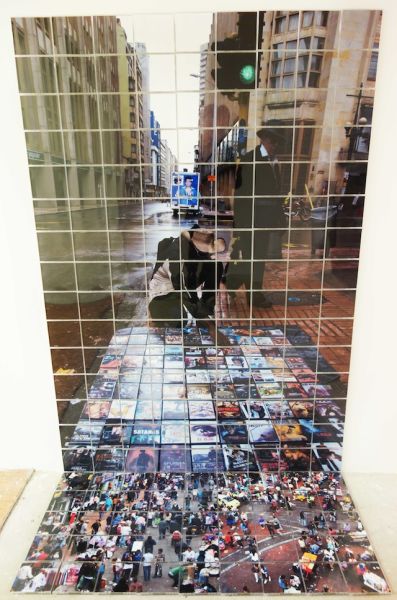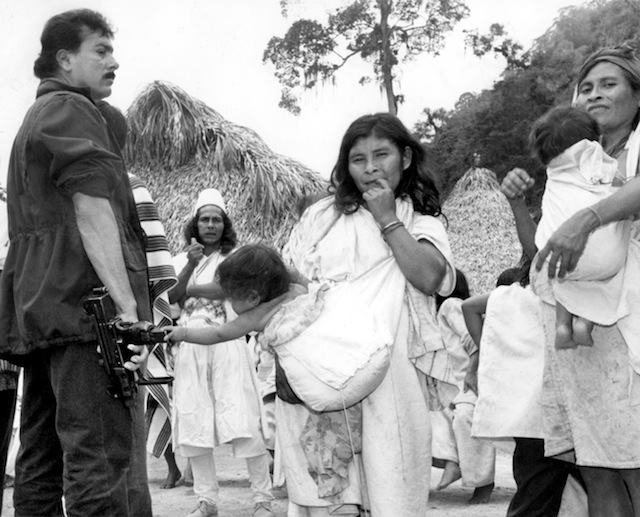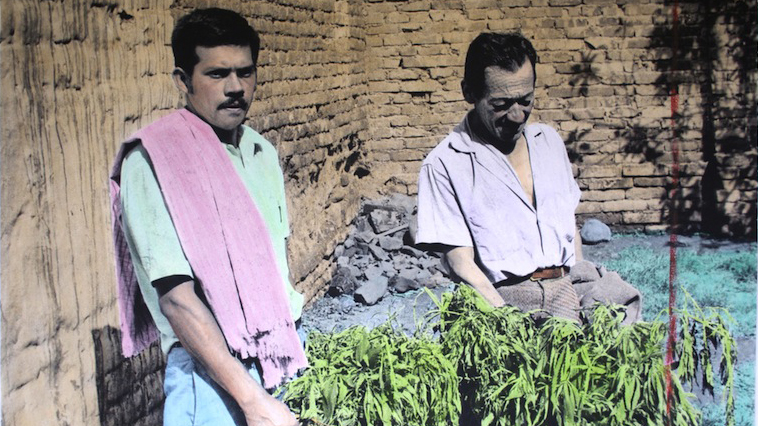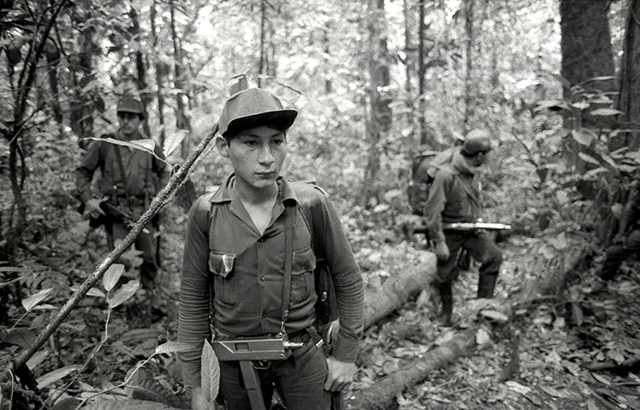Fourth World: Current Photography from Colombia at SF Camerawork presents the multi-generational work of four Colombian photographers, from journalists working in the 1980s to a conceptual artist born in that same decade. The exhibition is nominally about Colombian life in general, but decades of armed conflict, fueled by ideological differences and drug policies, govern Jaime Ávila, Zoraida Díaz, Luz Elena Castro and Andres Felipe Orjuela’s portrayals of the country.
One lively image of Colombian life is seen in Luz Elena Castro’s Guardians (1981), a black-and-white photograph of six young children smiling as they stand around a statue of a bloody and beaten Christ gazing heavenward. Grim religious imagery notwithstanding, the photograph captures a moment of apparent tranquility, one maybe only children are capable of enjoying.

This photograph, along with Jaime Ávila’s work, however, are rare examples of peace in an exhibit that more often depicts the country’s 50-year-long armed conflict. Most of Castro’s other works document soldiers, rebels, politicians and life under war.
Sacred Mountain (1993), a disturbing companion piece to Guardians, pictures a presidential bodyguard surrounded by women in a remote Andean town. A baby stretches from a sling to inquisitively reach for the guard’s submachine gun as if it were a toy.
The marriage of violence and childhood is made more clearly in Zoraida Díaz’s series of documentary-style photographs. In one, a boy draped in an oversized sweater smiles as he points a gun, possibly a toy, in the viewer’s direction. His puffed cheeks suggest a moment of joy as he plays desperado.

Two children run alongside an armored vehicle in Jugando a las Carreras (1988) while a man gripping a mounted machine gun looks askance at them.



